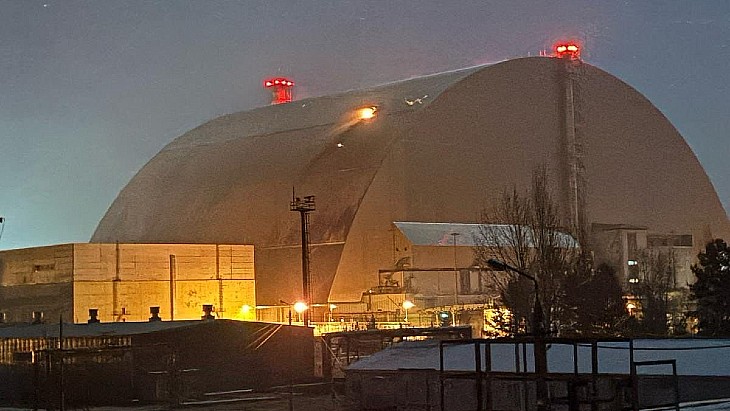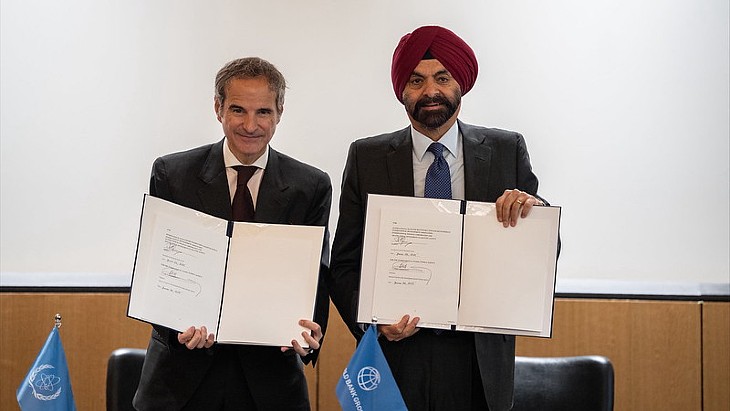Study points to Mayak as source of ruthenium release

Very small quantities of ruthenium-106 - a fission product from the nuclear industry and a radionuclide used in medicine - were detected in several European countries between late September and early October 2017. Early investigations suggested the contaminated air masses measured in Europe originated from the southern regions of the Urals. However, an international commission appointed by Russia to investigate the release met for the second time in April 2018 and concluded available data did not provide sufficient information to verify the emission originated from any of the activities assumed to have caused the release.
Researchers have now published a study in which over 1300 readings from across Europe and other regions of the world were analysed to determine the source of the release. Around 70 experts from all over Europe provided data and expertise for the study, which was led by Olivier Masson from France's Institute for Radiological Protection and Nuclear Safety. A total of 176 measuring stations from 29 countries were involved. The paper - titled Airborne concentrations and chemical considerations of radioactive ruthenium from an undeclared major nuclear release in 2017 - was published in the Proceedings of the National Academy of Sciences (PNAS) of the USA on 26 July.
The study notes that early in the 1960s, and even more so after the Chernobyl accident in April 1986, European radioprotection authorities had established or strengthened radionuclide monitoring networks on a national scale.
"Today most of these European networks are connected to each other via the informal 'Ring of Five' (Ro5) platform for the purpose of rapid exchange of expert information on a laboratory level about airborne radionuclides detected at trace levels," it says. In October 2017, an unprecedented release of ruthenium-106 into the atmosphere was the subject of numerous detections and exchanges within the Ro5.
"Based on times series of detections at various locations in Central Europe, the event was characterised as a short release," the study says. "The plume duration lasted about 1 to 3 days on average, depending on the location, with the exception of a few areas."
The release was "too substantial", it says, to be associated with the incineration of a medical radionuclide source. A satellite crash can also be excluded as the source of the ruthenium-106, it adds.
"It is much more likely that the Ru-106 escaped during reprocessing of spent nuclear fuel, possibly in the course of the miscarried production of a highly radioactive cerium-144 source for research applications in the Gran Sasso Laboratory in Italy," it says.
"According to detection time series, a back-trajectory analysis, and chemical considerations, the Mayak nuclear complex in southern Urals should be considered as a likely candidate for the release," the study concludes.
Professor Georg Steinhauser of the University of Hannover, who evaluated the data, said: "The readings indicate the probably largest single release of radioactivity from a civilian reprocessing plant. We were able to show that the accident happened in the reprocessing of spent fuel, at a very advanced stage of reprocessing, shortly before the end of the process chain. Even though there is no official statement yet, we have a pretty detailed idea of what might have happened."
Rosatom's response
In a 22 November 2017 statement, Russian state nuclear corporation Rosatom insisted: "The recent release of ruthenium-106 that has been detected across Europe did not come from a Rosatom facility. All Rosatom nuclear facilities, including nuclear power plants and nuclear fuel reprocessing sites, are operating safely and normally. There were no incidents at any of these sites during the period of September-October 2017."
Rosatom reiterated this in a statement today.
It said: “We maintain that there have been no reportable events at any Rosatom-operated plants or facilities. Both the national regulator and experts from an independent international inquiry inspected the Mayak facility back in 2017 and found nothing to suggest that the ruthenium-106 isotope originated from this site, nor found any traces of an alleged accident, nor found any evidence of local staff exposure to elevated levels of radioactivity.
"The recent PNAS report does not contain any new data or facts that differ from the data previously used by the national regulator and the independent international inquiry which reviewed all the scenarios, including that of an alleged accidental leak on the Mayak facility.
"The independent international inquiry has found the accidental release scenario to be inconsistent with the established facts.
"Had an accidental release of the alleged magnitude (250 TBq at once, as suggested in the PNAS report) taken place, the facility's automated control and monitoring systems would have recorded radioactivity thousands of times higher than what was actually recorded. Such levels would have triggered alarms at the plant to evacuate staff and residents from the surrounding area. If staff had been exposed to this much radiation, the ruthenium-106 would have been detectable. However, 250 of the Mayak site employees, including those working in its radiochemistry plant, were checked by an independent lab and none of them were found to have any traces of excess exposure.
"Contrary to a speculative theory in the PNAS report, the cerium-144 project activities conducted at the Mayak facility from August to November 2017 were related only to rare-earth concentrate which would only contain barely detectable traces of ruthenium-106 isotope.”









..._58412.jpg)

